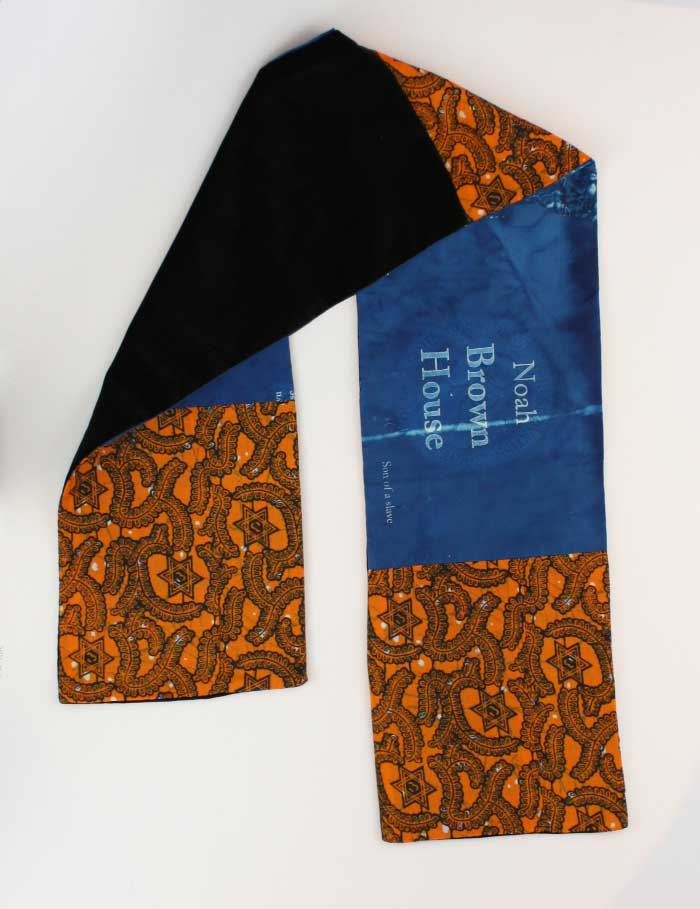Slavery’s Historic House Signs: Collected Stories
Slavery’s Historic House Signs: Collected Stories
Date
2015
Edition Size
4
Media
Letterpress
Dimensions
15 × 9.5 × 3 in
Collection
Uncategorized$ 4,200.00
Unavailable
View Collectors
University of California, Irvine (UCI)
Blassingame’s seven hand-printed scarf books lay, un-bound and loosely arranged for the viewer/ reader to handle. The scarves’ fabric types range from cyanotypes and tea-toned cyanotypes printed on cotton and silk, with velvet and “African” fabric purchased in South Africa. Each fabric piece is unique and is the vehicle of the pages of an artists’ book. The binding, covering, pace, and drapery is up to the reader/wearer.
Dimensions of scarves:
53 in x 8.5 in, 70 in x 8 in, 42 in x 9 in, 57 in x 7.5 in, 90 in x 7.5 in, 49 in x 8 in, 53 in x 7 in
Box dimensions: 15 x 9.5 x 3 inches
Blassingame outlines her process saying, “Every city and history holds invisible populations. Walking past the historic homes along Benefit Street in Providence, Rhode Island, one passes house markers that distinguish a population of white males and their achievements. I found it interesting to consider the African slaves that resided and worked in these homes. In many ways, this project is my method of cataloguing mundane facts and relationships between the invisible slave population and their distinguished, accomplished owners. Always the concept that the owners’ wealth accumulation was in large part made possible by their participation in the slave trade through holding, trading, and stocking the slave ships. This is an ongoing project with iterations involving printmaking, textiles, sculpture, book arts, fashion apparel, and papermaking. Each iteration explores the reader’s relationship to the piece. When the book is worn, new relationships to reading are forged. The reader/wearer and the reader/viewers have differing relationships and levels of interaction with the piece. In some cases, the reader/viewers must interact directly with the reader/wearer to gain access to the piece in order to read and make sense of it.”
Scarf books were worn in Rhode Island by artists (RISD students, faculty, and/or artists that have participated in RISD-affiliated exhibitions) during Spring 2015. Artists shared their experience as the reader/wearer with the book and their interactions with reader/viewers. For some the experience was ceremonial. For others it made them feel connected with their history as if they were wearing or were draped in history.
Each scarf relates to the experiences of slaves owned by the Brown, Hopkins (former governor of Rhode Island), and Waterman families of Providence, Rhode Island. Research for this project was conducted at the John Carter Brown Library at Brown University.











